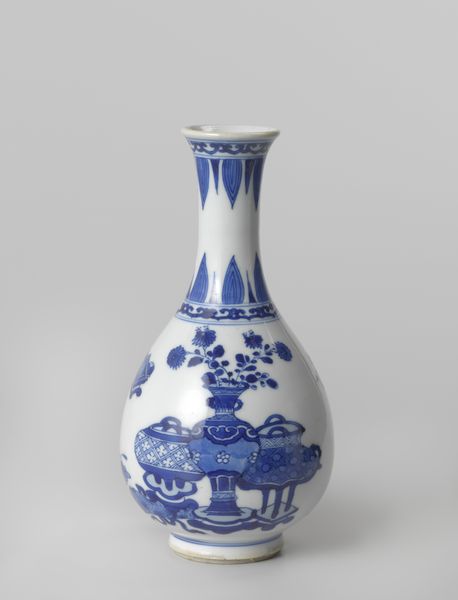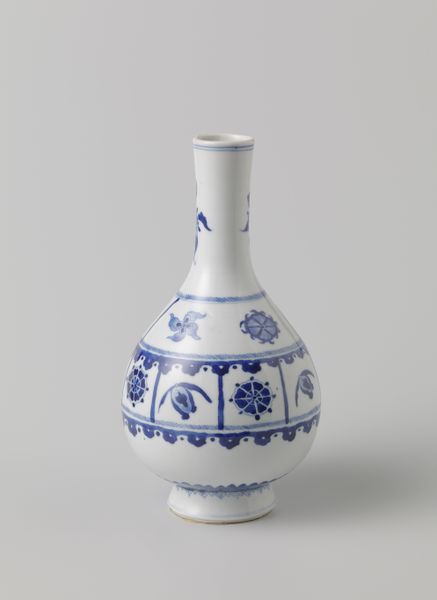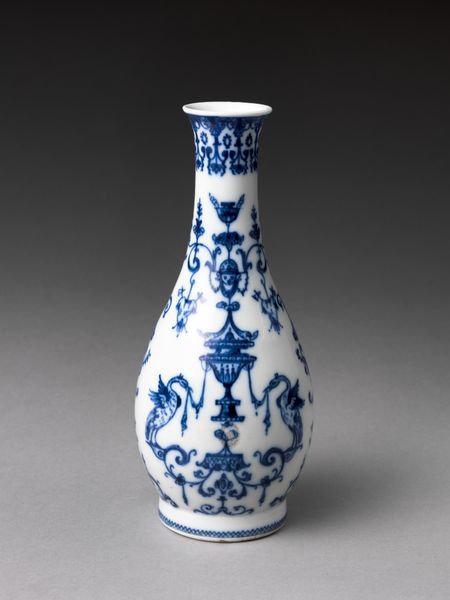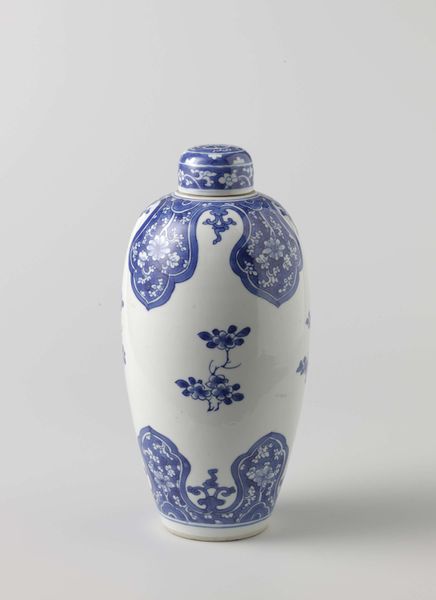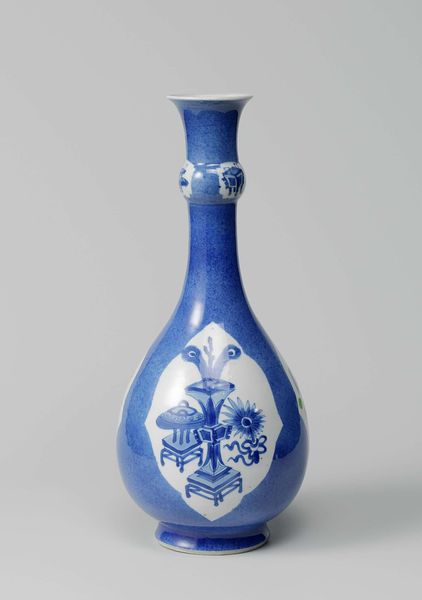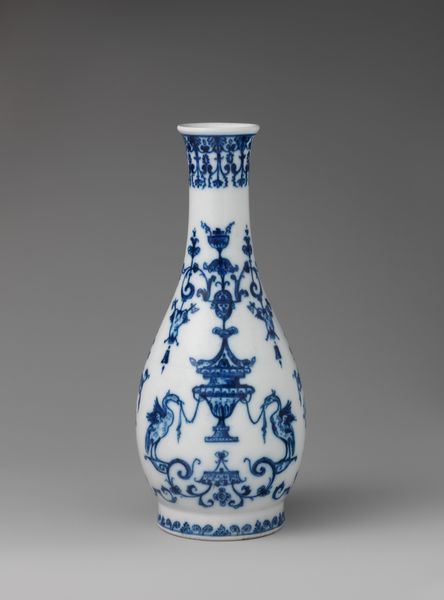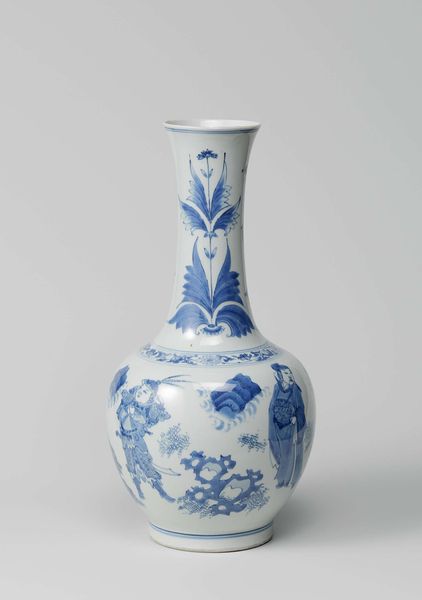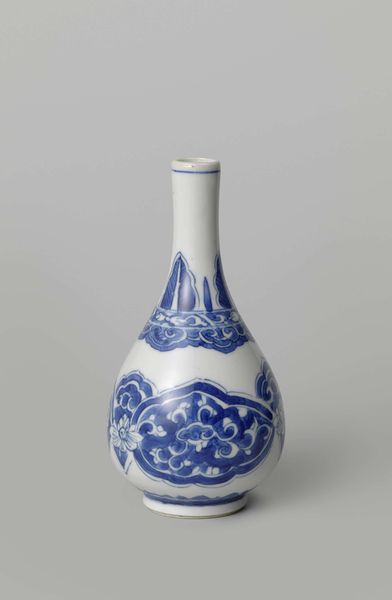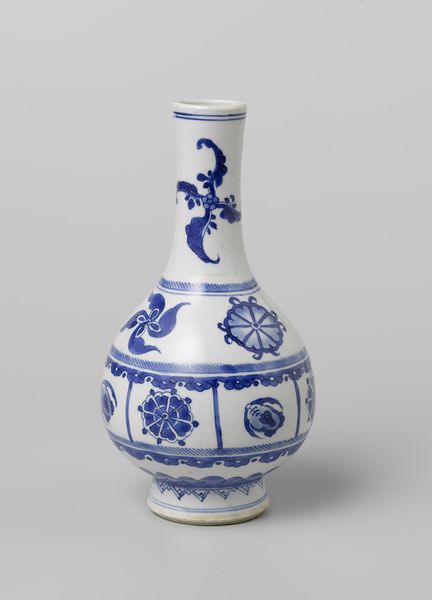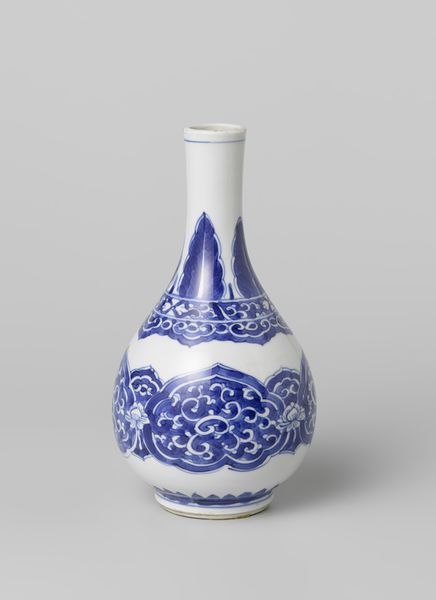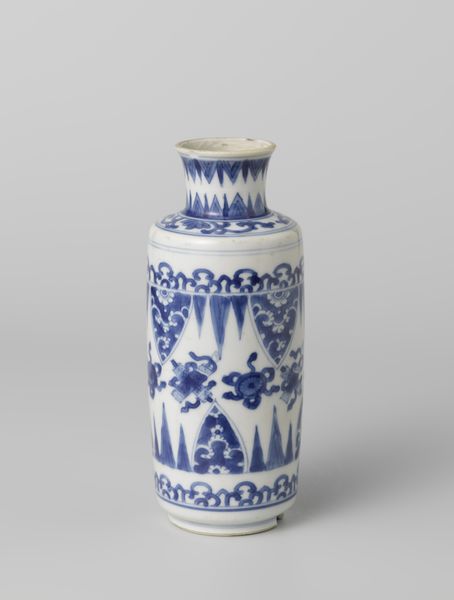
Pear-shaped bottle vase with auspicious symbols, tassels and ornamental borders c. 1680 - 1720
0:00
0:00
ceramic, porcelain
#
asian-art
#
ceramic
#
porcelain
#
stoneware
#
ceramic
#
decorative-art
Dimensions: height 30.7 cm, diameter 4.2 cm, diameter 17.2 cm, diameter 9.8 cm
Copyright: Rijks Museum: Open Domain
Curator: This is a pear-shaped bottle vase, a piece made between 1680 and 1720, so the late 17th or early 18th century. It’s currently housed here at the Rijksmuseum. The piece, made anonymously, is crafted from porcelain and stoneware and showcases intricate decorative art. Editor: Immediately, the blue against the stark white gives me this chill, pristine vibe. It’s almost as if this vase could hold whispers of forgotten seas or maybe just my favorite kind of gin! Curator: That sense of maritime connection is quite perceptive. These blue and white ceramics were crucial components within the early modern trade routes linking East Asia and Europe. The symbols decorating the vase would've likely held cultural and auspicious significance, both to its makers and those commissioning such work. What layers of cross-cultural meaning can we disentangle from a porcelain vase? Editor: Layers upon layers. I see these motifs swirling around and start to wonder, who chose them? What did they hope to evoke or manifest with these artistic decisions? Did the owner get a say, or was it entirely in the artisan’s hands? This dance between utility and spiritual intention is quite powerful here. I bet this piece had conversations going around. Curator: Absolutely. Porcelain held immense economic and symbolic importance during this era, representing not only artistry but also global exchange, cultural contact, and colonial power dynamics. Understanding porcelain helps us engage with broader historical issues involving intercultural aesthetics, status, and trade monopolies that significantly shaped socio-political relations of that time. It invites critical reflections regarding appropriation. Editor: True! And honestly, if this vase could talk—can you imagine? The tea it’s seen, the secrets it’s heard. But on another note, does it feel kind of...balanced to you? Even though it’s ornate, it's calming. Like an ocean you just can't stop watching. Curator: Yes, indeed. Its aesthetic invites meditative consideration regarding not only what is directly depicted on the vase, but it also draws awareness to underlying power structures shaping production. Editor: Beautifully said. I guess, for me, beyond all the historic considerations—which are huge—it makes you think about the things we surround ourselves with, what stories do they carry, or what dreams do they secretly nurture? It also reminds me, blue is eternally chic. Curator: A sentiment to which I heartily agree! Thinking through decorative arts this way provides critical understanding connecting material aesthetics and sociopolitical contexts relevant to our ongoing concerns today.
Comments
No comments
Be the first to comment and join the conversation on the ultimate creative platform.
